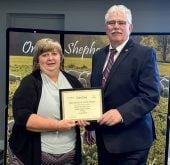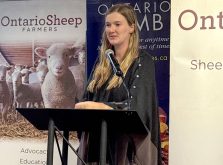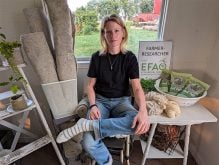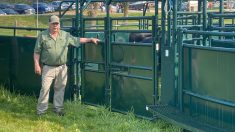When Yaser Al-Qayem bought and modernized Parkhill Meats in 2016, he anticipated growing demand for halal meat in Ontario.
This past June, Parkhill Meats processed 450 lambs over three days to meet Eid demand, a 17 to 18 per cent increase over the previous year, he told attendees of the Ontario Sheep Farmers annual meeting in October.
Why it matters: Ontario is home to 55.2 per cent of Canada’s Muslim population, providing the sheep sector with rising demand for halal lamb.
Read Also
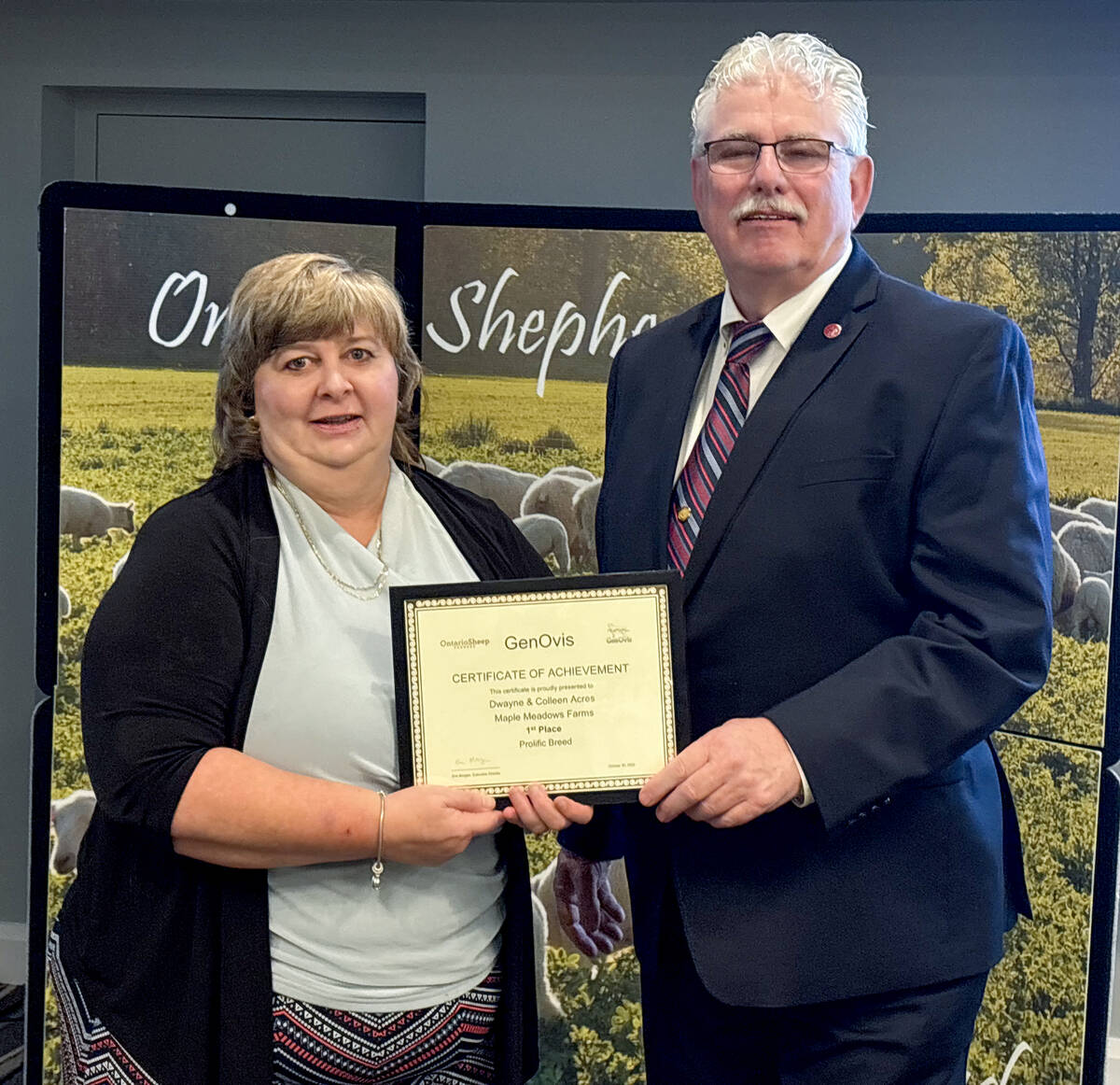
GenOvis awards presented at Ontario Sheep Farmers’ annual meeting
Producers and youth were recognized for their contributions during the Ontario Sheep Farmers’ annual GenOvis and leadership awards.
Al-Qayem serves the wholesale, restaurant and retail sectors and the halal market with fresh local meat.
“The expectation is by 2039, according to the samples, it is almost going to be around a 40 to 50 per cent (increase) from the current year,” he said. “That correlates to the fact the Muslim population is growing, and the demand is growing accordingly.”
Muslims account for 4.6 per cent (582,000 people) of Ontario’s population, said Al-Qayem, and projections suggest Canada’s domestic halal meat market will reach $300 million in the next seven years.
“In terms of dollars, Muslim households spend around $31 per week on halal meat products,” he said. “That’s double what other background groups spend, which is $17 per week.”
In Al Qayem’s opinion, culture, household numbers and ethnic background play a significant role in why Muslims spend 80 per cent more on food than other demographics.
Ramadan and Eid, a Muslim holiday similar to Christmas, follow the lunar calendar and occur 11 days earlier each year, occasionally aligning with Christian holidays.
In 2022 and 2023, Ramadan, Easter and Passover occurred within the same time frame.
Al-Qayem said two weeks before and three weeks into Ramadan’s month-long fasting, there is increased lamb market pressure as families gather to share or prepare food.
“There is a big demand on food, especially meat and specifically lamb,” he said. “These are kind of snapshots of the seasons and how we see numbers and demand increase over time.”
In 2030, Eid will coincide with Easter, and with Christmas in 2039 and 2040, said Al-Qayem. That will increase demand and prices likely well beyond the 2039 projections, which don’t calculate for the concurrent holidays.
“It’s going to be a very challenging time coming up. But business-wise, this is good,” he said. “That gives you some idea from your operation’s perspective what you’re looking for in terms of numbers.”
Inflation has impacted consumer buying habits, but unexpected price spikes curtail sales because most consumers can adjust spending if prices rise slowly over time, Al-Qayem said.
“We try to work with the farmers to understand the forecast so we can plan production accordingly and make sure that it’s consistent for us so we can sell it in the market.”
Based on eight years of supplying the halal market, Al Qayem said approximately 80 per cent of consumers want consistent fresh cuts from lean 60 to 90-pound live lambs less than 12 months old with fatty tails. At a push, he estimates 20 per cent of the market may purchase year-old animals.
In the Middle East, grass-fed fat-tailed Awassi lambs require longer to reach ideal weights compared to Ontario’s corn-fed lambs, which hit slaughter weight at four or five months old.
“This is an opportunity for working together to educate the market about the different feeding programs that exist here in Ontario and how that correlates with the size, weights, and age of these lambs when they compare them to lamb back home,” Al Qayem suggested.
Wahab Zamani owns Simcoe Street Meats, a provincially inspected abattoir, and is part owner of Farmers Butcher Shop, which provides a local supply loop within the community. He disagrees with Al Qayem on the latter idea.
Zamani processes approximately 3,000 lambs a year and said grass-fed lambs provide inconsistent results that don’t appeal to his consumers.
“Unless you pay very deep attention to the grass they’re grazing, and you’re rotationally grazing and decide ‘I’m going to get married to this patch of land’ and constantly monitoring, you will not have a consistent result. You’re wasting your time,” he said, speaking solely as a processor.
He said successful grass-lamb producers are wholly committed to testing soil, grass and hay throughout the process.
“You really should be finishing them,” Zamani added. “In the last few weeks, they need something just to put on some kind of outer shell of fat cap.”
Al-Qayem said educational materials in a variety of languages could explain how grass-fed and corn-fed impacts the consistency, size, meat colour and fat coverage of a lamb, and help halal customers feel more confident in their choices.
By working closely with shepherds, the two sectors have been able to reduce waste by finding an ideal consistency, size, meat colour and fat coverage that appeals to Muslims and the general consumer.
Zamani said carcass choice differs depending on use and market.
“Each market is a little different. Once you get to know that, then your (selection) metrics are different.”
Halal consumers want lean animals but also view tail fat as a hot commodity. Awassi sheep, popular in the Middle East, provide those attributes.
“There is a big, big demand. I know there are some people now going back to Turkey, and I believe Georgia (Russian State),” said Al-Qayem. “I have competitors in the market who are going and buying loads of the tail fat (lambs).”
He suggested that if Awassi sheep were imported to Canada and grown for commercial use, his sales would double because most clients prefer Ontario lamb.
He said customers who have bought Australian or New Zealand lamb racks or legs have told him they prefer the quality and freshness of Ontario lamb.
“Having the Ontario-brand lamb product in the market is a very good opportunity, not only from the quality and its colour but also from a pricing perspective. I think we can compete with that (Costco $42.85 per kilo) price in the marketplace.”






